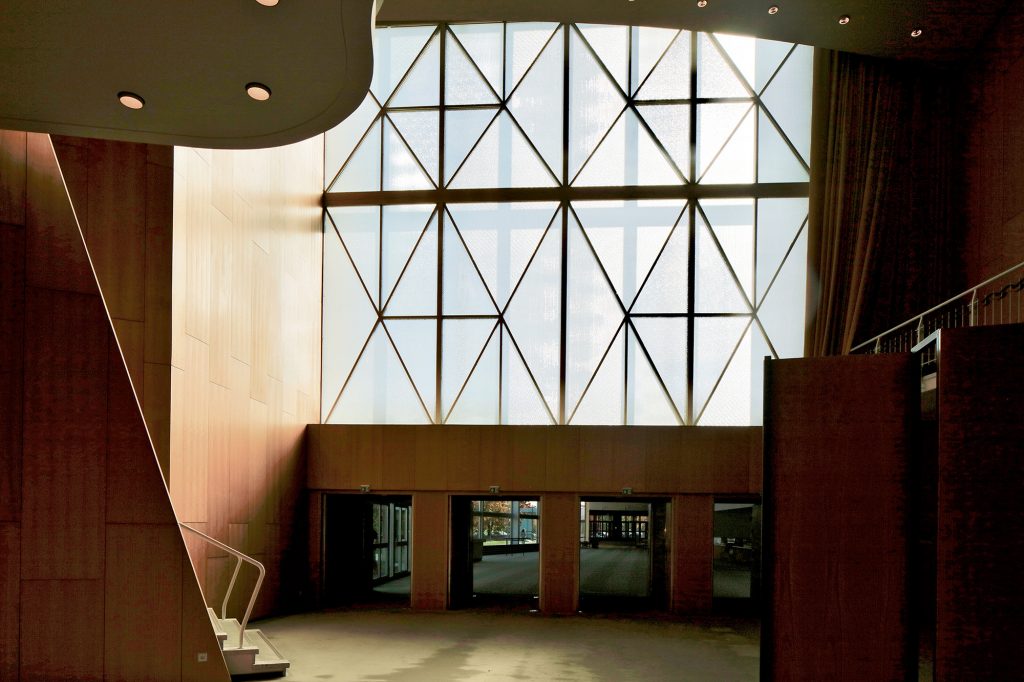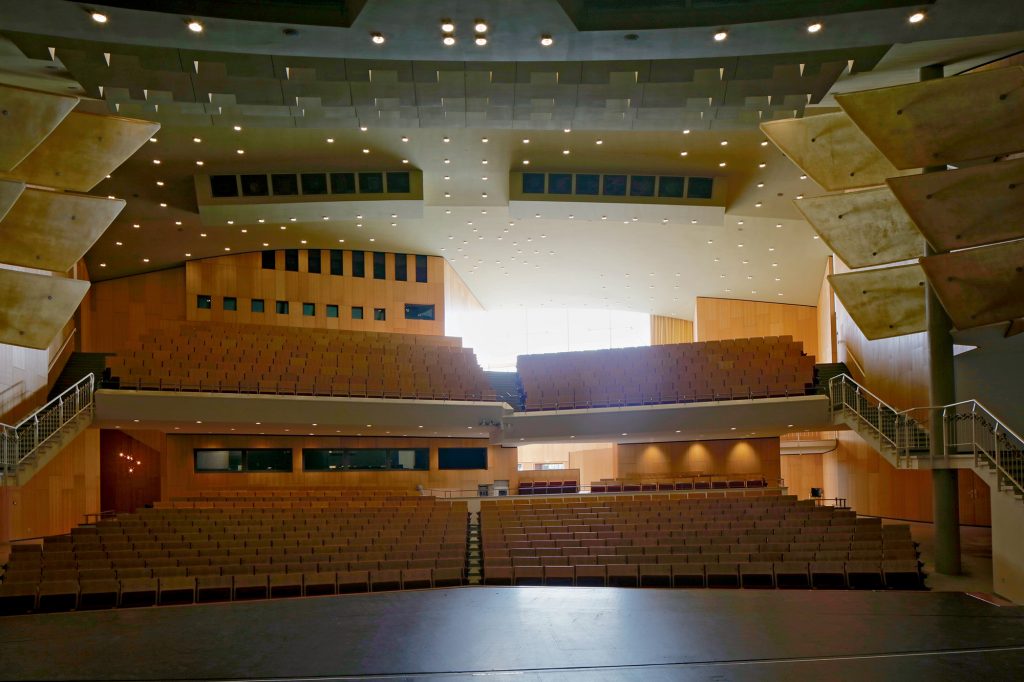**
Title: Hans Scharoun. Gestalt Finden
Authors: Ralf Bock. Photography by Philippe Ruault
Edited by: Park Books
2022. ISBN: 978-3-03860-289-7
Language: German
488 pages
***
For those of us who studied architecture from the 2000s onwards in the Spanish context, the figure of Hans Scharoun was always veiled by the halo of attraction that radiates from the unknown and inaccessible. The almost total absence of monographs or partial publications on his work defined an almost unreal, unbridgeable distance between his legacy and our desire to delve deeper into it. A couple of images, perhaps from a past trip, of some of his most iconic works in Berlin, shown in class by professors who opened up new challenges; the hypnotic sequence filmed in the National Library by Wim Wenders for “Der Himmel über Berlin”… Stimuli condemned to fade away, to stubbornly crash against the wall of an induced oblivion, a negligence in bibliographical dissemination that contrasted obscenely with the profusion and overabundance of works on parallel authors such as Mies van der Rohe. However, the passing of the years suddenly left us with different publications compiling the work of the German architect. Books that, perhaps with unequal fortune, finally brought Hans Scharoun’s work closer to any of us. Among them, the most recent “Hans Scharoun. Gestalt finden”, by Ralf Block and published by Park Books in 2022, is certainly a candidate as the definitive compilation work on the Bremen architect.
Para aquellos que estudiamos arquitectura a partir de los 2000 en el contexto español, la figura de Hans Scharoun estuvo siempre velada por el halo de atracción que irradia lo desconocido e inaccesible. La ausencia prácticamente total de monografías o publicaciones parciales sobre su obra definía una distancia casi irreal, insalvable, entre su legado y nuestro anhelo de profundizar en él. Un par de imágenes, procedentes quizá de un viaje pasado, de alguna de sus obras más icónicas en Berlín, mostradas en clase por profesores que abrían nuevos desafíos; la hipnótica secuencia rodada en la Biblioteca Nacional por Wim Wenders para “Der Himmel über Berlin”… Estímulos condenados a apagarse, a estrellarse obstinadamente frente al muro de un olvido inducido, una negligencia en la difusión bibliográfica que contrastaba obscenamente con la profusión y sobreabundancia de trabajos sobre autores paralelos como Mies van der Rohe. Sin embargo, el paso de los años nos fue dejando súbitamente diferentes publicaciones que recopilaban la obra del arquitecto alemán. Libros que, quizá con desigual fortuna, acercaban por fin el trabajo de Hans Scharoun a cualquiera de nosotros. Entre ellas, la más reciente “Hans Scharoun. Gestalt finden”, de Ralf Block y publicada por Park Books en el año 2022, se postula con toda seguridad como candidata a obra recopilatoria definitiva sobre el arquitecto de Bremen.
Hans Scharoun’s extensive output reflects the exceptionally turbulent historical and social developments in Germany throughout the 20th century. Despite the hardships of living through the First and Second World Wars as a first-hand witness, his work as an architect never stopped. Proof of this was the continuous destruction of his office, with the consequent loss of his archives, in the twilight of the Third Reich in the face of the Allied siege. The different themes covered by his work reflect the evolution of the German political and economic situation, which went through two world wars and led to a guarded democracy that unevenly fragmented a devastated territory. Parallel to this historical development, Hans Scharoun’s work evolved from small single-family housing commissions for bourgeois families to large social housing complexes which, in an accelerated process of reconstruction and consolidation, defined the urban fabric of a new Berlin. All this, of course, without neglecting to mention the great iconic works that were to collaborate in the construction of the new German society, the Berlin Philharmonic and the aforementioned National Library.
La extensa producción de Hans Scharoun es reflejo de la excepcionalmente agitada evolución histórica y social de Alemania a lo largo del siglo XX. A pesar de las dificultades que haber vivido la Primera y Segunda Guerra Mundial como testigo directo pudieron implicar, su trabajo de arquitecto no se detuvo en ningún momento. Muestra de ello fueron las continuas destrucciones de su oficina, con la consecuente pérdida de sus archivos, en el ocaso del Tercer Reich frente al asedio aliado. Los diferentes temas que abarca su producción son reflejo de la propia evolución de la circunstancia política y económica alemana, que transitó por dos guerras mundiales para desembocar en una democracia custodiada que fragmentó desigualmente un territorio devastado. En paralelo a este devenir histórico, la obra de Hans Scharoun evoluciona desde pequeños encargos de vivienda unifamiliar realizados por familias burguesas hacia amplios conjuntos de vivienda social que, en un acelerado proceso de reconstrucción y consolidación, definiesen el tejido urbano de un nuevo Berlín. Todo ello, por supuesto, sin dejar de mencionar las grandes obras icónicas de debían colaborar en la construcción de la nueva sociedad alemana, la Filarmónica de Berlín y la ya mencionada Biblioteca Nacional.

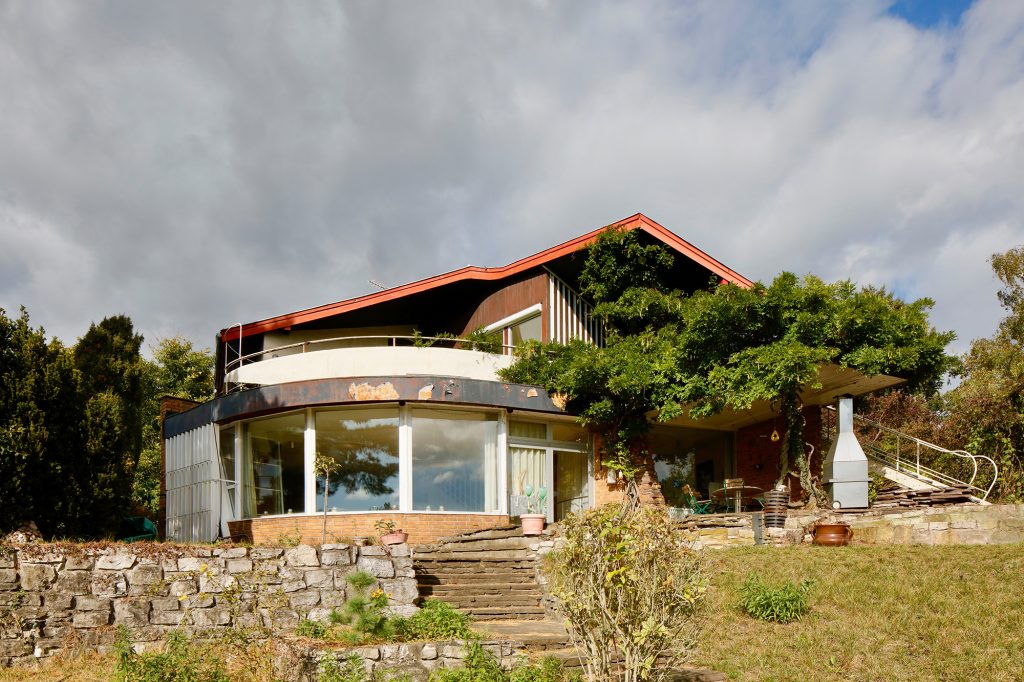
“Hans Scharoun. Gestalt finden” presents 32 projects selected from the German architect’s vast production. The main characteristic of this Park Books publication, and surely also its main virtue, is its vocation to exhaust Hans Scharoun’s work, that is, to present a sufficiently extensive amount of graphic documentation to be able to analyse the works presented in depth, in a rigorous and detailed manner. Each of the projects is presented according to the same narrative structure. Firstly, the critical context of each work is constructed by means of brief texts that always refer to the same themes: promoter, design process and concept. Each project is then graphically illustrated with floor plans, sections and elevations drawn especially for this monograph by Ralf Block, as well as recent photographs by Philippe Ruault. The decision to present all the projects in the same informative structure and with the same graphic language greatly facilitates the possibility of analysis and comparison between them. It seems to us, therefore, to be an unquestionable success that will compensate for the effort put into the production of the documentation with the potential it offers to the readers.
“Hans Scharoun. Gestalt finden” presenta 32 proyectos seleccionados entre la vasta producción del arquitecto alemán. La principal característica de esta publicación de Park Books, y seguramente también su principal virtud, es la vocación de agotar la obra de Hans Scharoun, es decir, de exponer una cantidad de documentación gráfica lo suficientemente extensa como para poder analizar las obras presentadas en profundidad, de forma rigurosa y detallada. Cada uno de los proyectos se expone siguiendo una misma estructura narrativa. En primer lugar, se construye el contexto crítico de cada obra mediante unos breves textos que hacen siempre referencia a los mismos temas: promotor, proceso de diseño y concepto. Posteriormente, cada proyecto se ilustra gráficamente mediante plantas, secciones y alzados dibujados especialmente para esta monografía por Ralf Block, así como con fotografías recientes, obra de Philippe Ruault. La decisión de presentar todos los proyectos con la misma estructura informativa y con el mismo lenguaje gráfico favorece extraordinariamente la posibilidad de análisis y comparación entre ellos. Nos parece, por tanto, un acierto incuestionable que compensará el esfuerzo desarrollado en la producción de la documentación con el potencial que despliega ante los lectores.
The graphic documentation illustrating the projects is, however, uneven in its quality despite its successful conception. On the one hand, the photographs are outstanding. Firstly, the fact of illustrating the buildings in their current state, with the traces and sedimentation that everyday life has left on them, provides a particular look which, project by project, constitutes an atmosphere that integrates Hans Scharoun’s varied production. This particular positioning provides a sense of continuity and natural transition throughout an oeuvre that spans more than 40 years, embracing an enormous variety of expressive resources and plastic and architectural elements. Secondly, the photographs have a special vocation to reveal less travelled, even unknown, places in most of the projects. Take, for example, the Schminke single-family house of 1930, one of his most important projects. The perspective of the garden façade, with the play of organic lines composed of the overhangs of the balconies on different levels and the rising diagonal of the staircase, is one of the most representative images of the German architect’s interwar period. Most publications limit themselves to repeating this image, which is of course included here, along with some other highly representative interiors. Ralf Block, on the other hand, includes in “Hans Scharoun. Gestalt finden” up to 27 photographs by Philippe Ruault. This extensive collection of images attempts to unravel a complex architectural reality which, of course, can only be fully grasped through physical experience. This admirable attempt, however, builds a necessary documentary base that could allow a very detailed approach. Showing corners, spaces, sequences hitherto unknown in each of the projects, produces a state of excitement that few monographs manage to incite.
La documentación gráfica que ilustra los proyectos nos resulta, sin embargo, irregular en su calidad a pesar de lo acertado de su concepción. Por un lado, las fotografías son sobresalientes. En primer lugar, el hecho de ilustrar los edificios en su estado actual, albergando los rastros y sedimentaciones que la vida cotidiana ha dejado en ellos, proporciona una mirada particular que, proyecto a proyecto, constituye una atmósfera que integra la variada producción de Hans Scharoun. Este posicionamiento determinado proporciona una sensación de continuidad y transición natural a lo largo de una obra que se extiende durante más de 40 años, acogiendo una enorme variedad de recursos expresivos y elementos plásticos y arquitectónicos. En segundo lugar, las fotografías tienen una especial vocación de desvelar lugares menos transitados, incluso desconocidos, en la mayoría de los proyectos. Tomemos como ejemplo la vivienda unifamiliar Schminke de 1930, uno de sus proyectos más relevantes. La perspectiva de la fachada del jardín, con el juego de líneas orgánicas compuesto por los vuelos de los balcones en diferentes niveles y por la diagonal en ascenso de la escalera, es una de las imágenes más representativas de la etapa de entreguerras del arquitecto alemán. La mayoría de las publicaciones se limitan a repetir esta imagen, que por supuesto aparece aquí incluida, junto con algún interior también muy representativo. Ralf Block, por el contrario, incluye en “Hans Scharoun. Gestalt finden” hasta 27 fotografías de Philippe Ruault. Este amplio conjunto de imágenes intenta desentrañar una compleja realidad arquitectónica que, evidentemente, solo puede ser aprehendida por completo mediante la experiencia física. Este intento admirable, sin embargo, construye una base documental necesaria que pudiera permitir una aproximación muy detallada. Mostrar rincones, espacios, secuencias hasta ahora ajenas en cada uno de los proyectos, produce un estado de excitación que pocas monografías consiguen incitar.
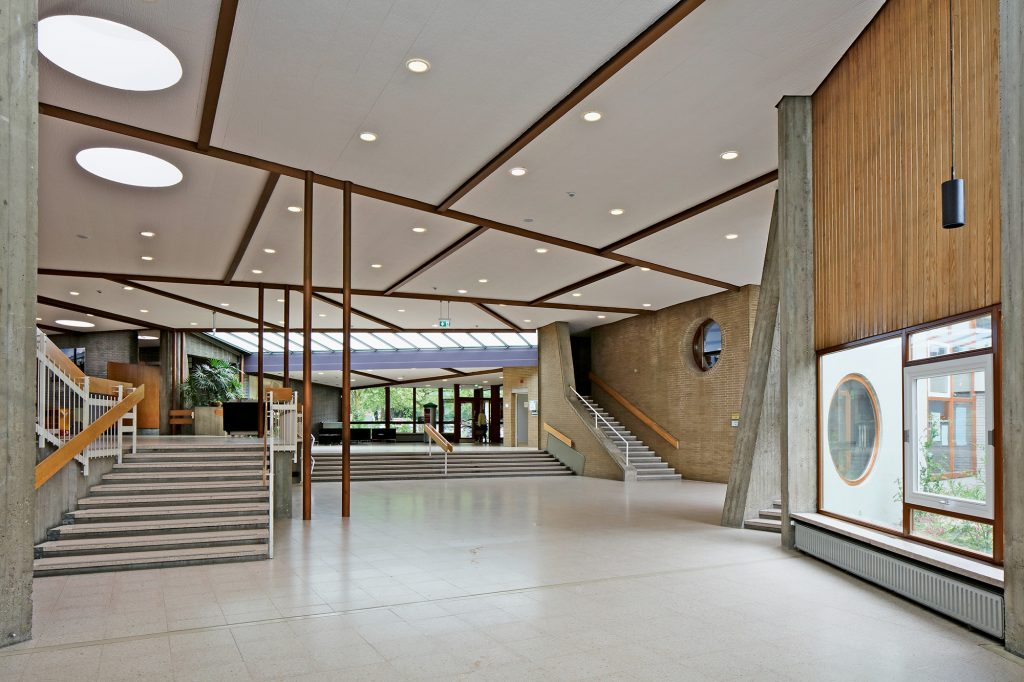

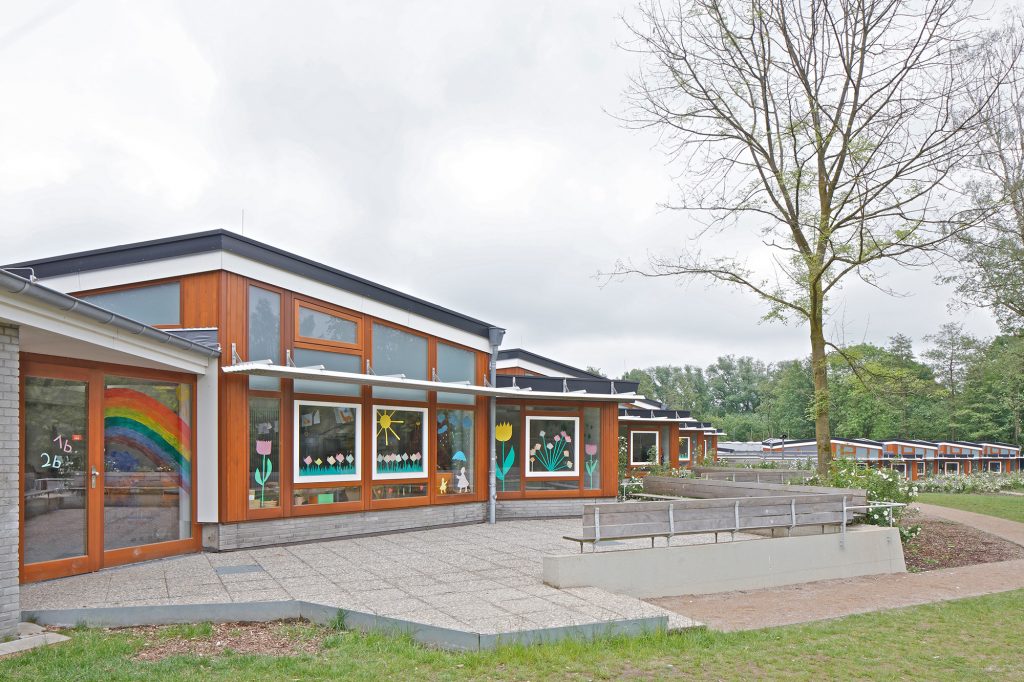
Within the irregularity of the graphic documentation illustrating “Hans Scharoun. Gestalt finden”, while the photography is outstanding, the architectural plans unfortunately do not reach the same level of communication and evocation. To begin with, the attempt to represent all the projects with the same graphic language is remarkable. The redrawing of the plans, the application of similar codes and scales, leads to a simplified process of unification that, once again, lays the foundations for an adequate analysis. On the other hand, we are left with the feeling that it would have been very positive to go a step further and be more demanding with the graphic representation. The attempt to provide as much graphic documentation as possible sometimes leads to the presentation of elevations or sections that are irrelevant to the conception of the project. In the consequent search for editorial coherence, undoubtedly brilliantly achieved, we find this redundancy tolerable. However, certain errors and questionable decisions in the graphic codes used should have been reviewed. The newly produced drawings, although correct in their legibility, do not stand out for the sensitivity of their expression. Although they are sufficient to ensure a correct understanding of the projects, they do not stand up to the slightest comparison with the originals by Hans Scharoun that appear in the book’s introduction.
Dentro de la irregularidad que manifiesta la documentación gráfica que ilustra “Hans Scharoun. Gestalt finden”, si la fotografía es sobresaliente, los planos arquitectónicos no alcanzan, por desgracia, ese nivel de comunicación ni evocación. Para empezar, es destacable el intento de representar todos los proyectos con el mismo lenguaje gráfico. El redibujado de los planos, la aplicación de unos códigos y escalas similares, conduce a un simplificado proceso de unificación que, de nuevo, sienta las bases para un trabajo de análisis adecuado. Por otro lado, nos quedamos con la sensación de que habría sido muy positivo dar un paso más y ser más exigentes con la representación gráfica. El intento de aportar toda la documentación gráfica posible conduce, en ocasiones, a presentar alzados o secciones que resultan irrelevantes en la concepción del proyecto. En la consecuente búsqueda de una coherencia editorial, alcanzada indudablemente de manera brillante, encontramos esta redundancia tolerable. Sin embargo, ciertos errores y decisiones cuestionables en los códigos gráficos empleados deberían haber sido revisados. Los dibujos de nueva producción, aunque correctos en su legibilidad, no destacan por la sensibilidad de su trazo. Si bien son suficientes para garantizar una correcta comprensión de los proyectos, no resisten una mínima comparación con los originales de Hans Scharoun que aparecen en la introducción del libro.
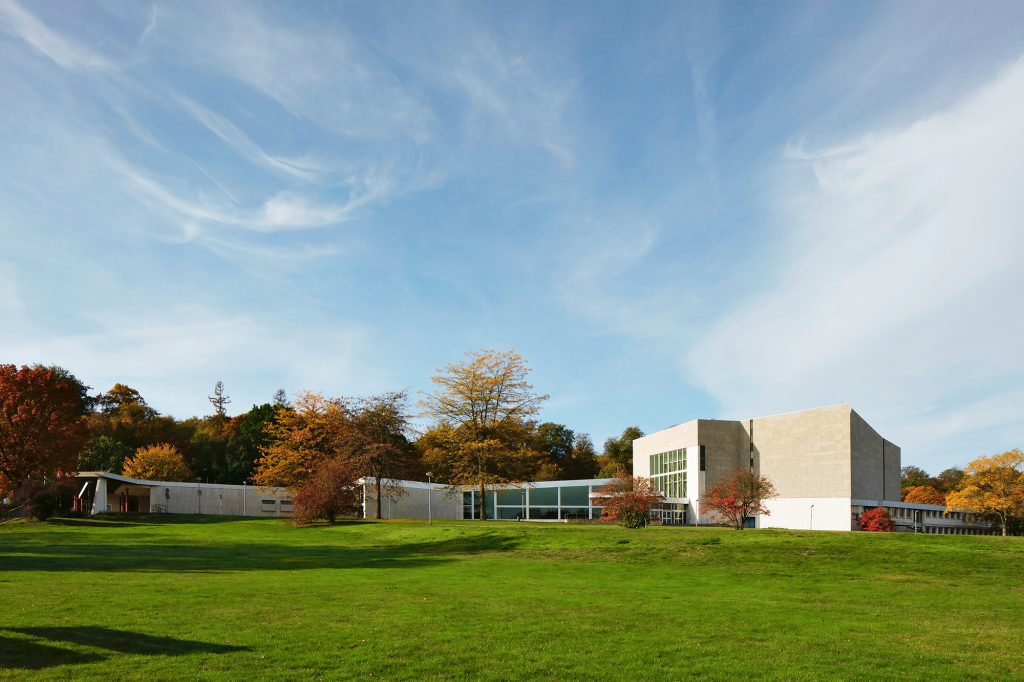
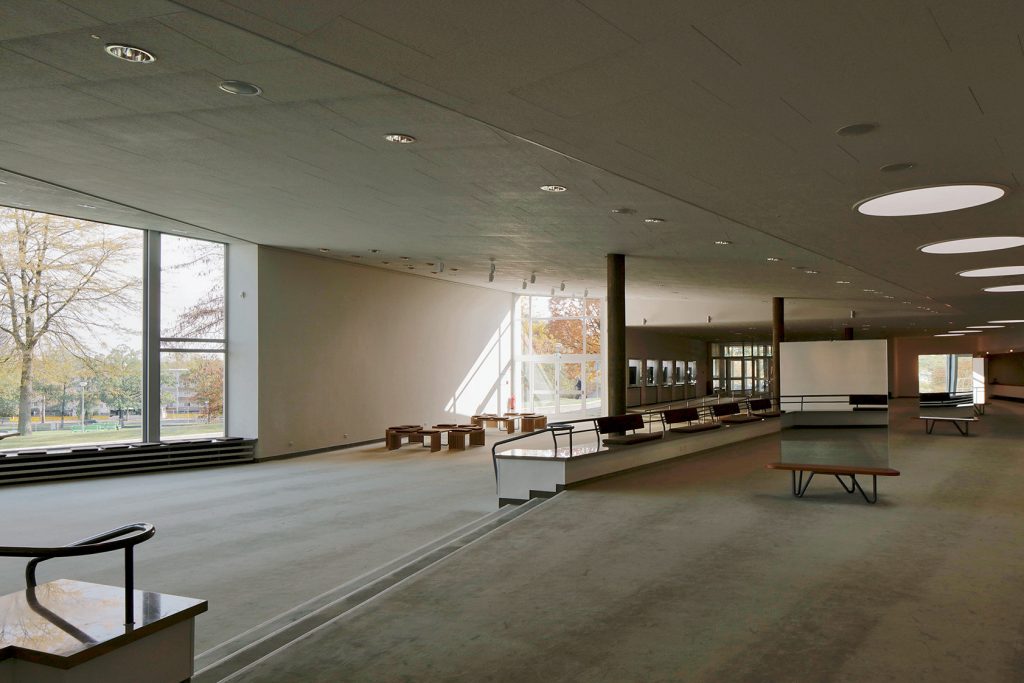
Finally, it is necessary to make special mention of the introductory part of the book, i.e. the various pieces of text that the author, Ralf Block, has prepared in order to construct a suitable framework for contextualising Hans Scharoun’s work. The search for a systematisation that comprehensively presents the work of the German architect is once again applied to the essayistic and critical part of “Hans Scharoun. Gestalt finden”. As the opening of the monograph, seven articles are presented, which break down the different stages of the German architect’s production, establishing a clear relationship between them and the most recurrent themes. The texts, sadly for the moment only in German, are rigorous in their referential and bibliographical outline. However, we find in their clarity and in this recurrent attempt at scientific systematisation their greatest virtue. Thus, understanding how Hans Scharoun’s work evolves in parallel to the evolution of Germany, how an organicist language born in the small details of bourgeois dwellings consolidates and extends to large-scale projects rooted in an expanding urban landscape is a delight for the scholar. Within the brilliant critical body of work constructed by the author of this monograph, we would like to highlight a little more the part corresponding to the relationship established between the typologies of collective housing and the construction of an urban landscape with an integrating vocation.
Por último, es necesario hacer mención destacada a la parte introductoria del libro, es decir, las diferentes piezas de texto que el autor, Ralf Block, ha preparado para construir un marco idóneo de contextualización de la obra de Hans Scharoun. Pues bien, la búsqueda de una sistematización que presente exhaustivamente la obra del arquitecto alemán se aplica de nuevo a la parte ensayística y crítica de “Hans Scharoun. Gestalt finden” Como apertura de la monografía, se presentan siete artículos que desgranan las diferentes etapas de la producción del arquitecto alemán, estableciendo una nítida relación entre ellas y los temas más recurrentes. Los textos, tristemente por ahora sólo en alemán, son rigurosos en su trazado referencial y bibliográfico. Sin embargo, encontramos en su claridad y en ese recurrente intento de sistematización científica su mayor virtud. Así, comprender cómo la obra de Hans Scharoun evoluciona en paralelo al devenir de Alemania, cómo un lenguaje organicista nacido en los pequeños detalles de viviendas burguesas se consolida y extiende a proyectos de gran escala enraizados en un paisaje urbano en expansión es un deleite para el estudioso. Dentro del brillante cuerpo crítico construido por el autor de esta monografía, quisiéramos destacar si cabe un poco más la parte correspondiente a la relación establecida entre las tipologías de vivienda colectiva y la construcción de un paisaje urbano de vocación integradora.
In conclusion, it is with great satisfaction that we find what is to date the most profound and exhaustive monograph on the work of Hans Scharoun. The search for a unifying framework that systematically presents the different projects executed over five decades constitutes an admirable work, creating an exceptional basis from which to approach the indispensable architectural production of the German author. Despite showing some limitations in the graphic expression of the architectural documents, an outstanding photography underpins a monograph that is a must-have reference in terms of the treatment of in-depth and exhaustive documentation. We hope that a future English edition of “Hans Scharoun. Gestalt finden” will enhance and facilitate the dissemination of an essential and indispensable book.
Como conclusión, encontramos con enorme satisfacción la que hasta la fecha constituye la más profunda y exhaustiva monografía sobre la obra de Hans Scharoun. La búsqueda de un marco unificador que presente de forma sistematizada los diferentes proyectos ejecutados a lo largo de cinco décadas constituye un trabajo admirable, confeccionando una base excepcional desde la que acercarse a la imprescindible producción arquitectónica del autor alemán. A pesar de mostrar algunas limitaciones en lo relativo a la expresión gráfica de los documentos arquitectónicos, una fotografía sobresaliente apuntala una monografía de referencia obligada en lo que al tratamiento de una documentación profunda y exhaustiva se refiere. Esperamos que una futura edición en inglés de “Hans Scharoun. Gestalt finden” potencie y facilite la difusión de un libro esencial e imprescindible.
